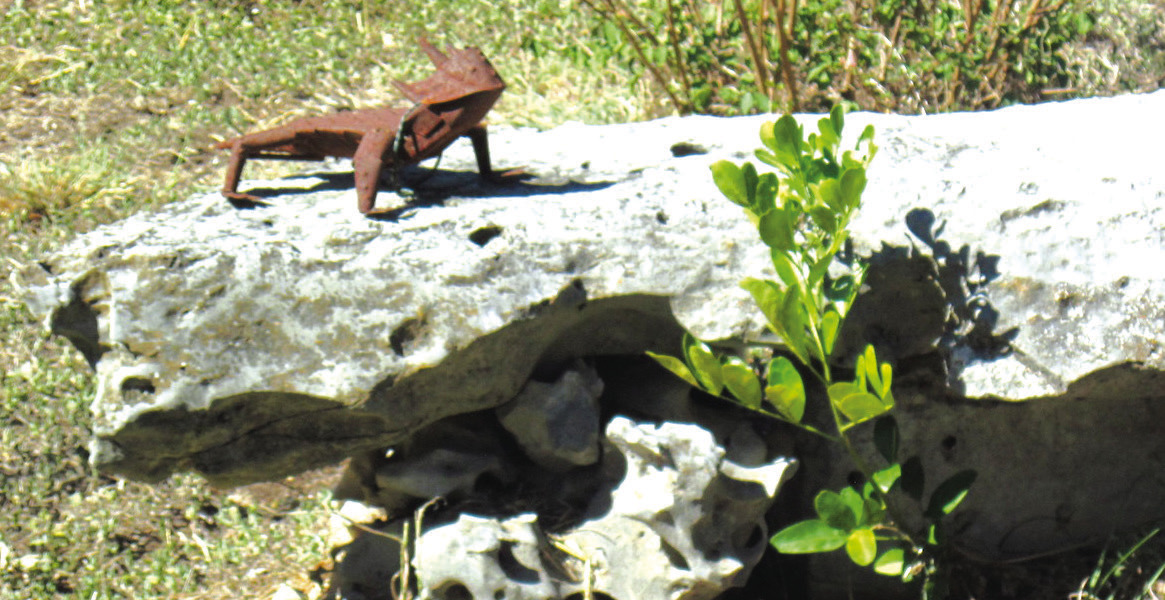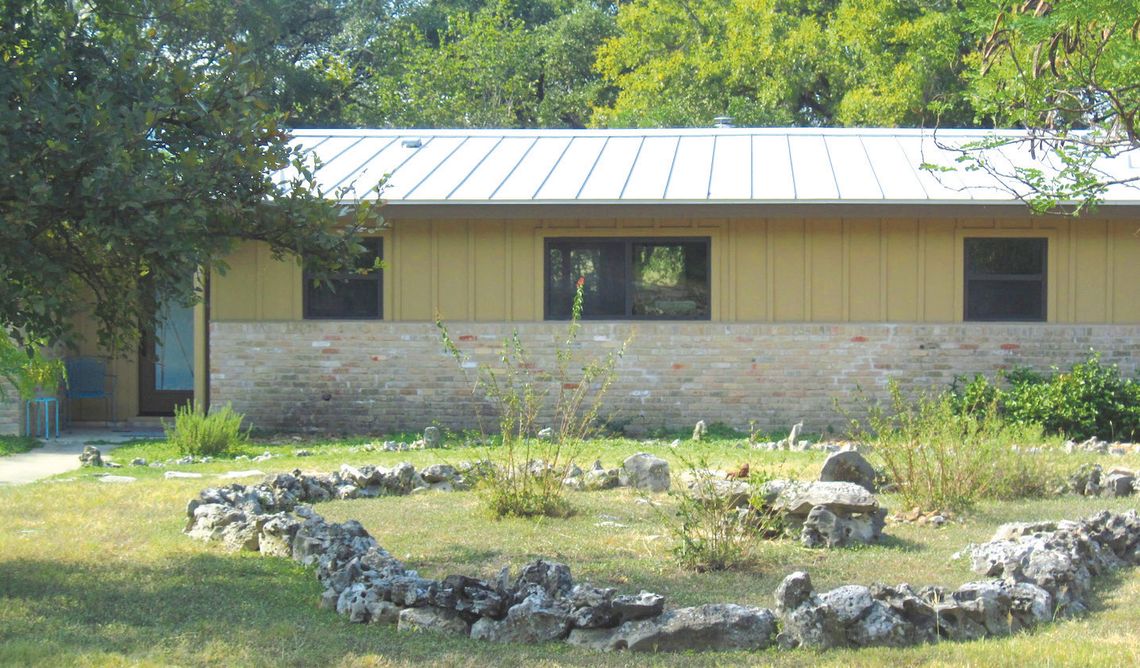Evolving landscape addresses constant challenges of central Texas
Spring Lake Garden Club’s October yard of the month outlines a transition from aging trees and a lawn of St. Augustine grass to a new landscape of drought-tolerant native plants and trees. Ben and Cori Schwartz settled on West Mimosa Circle in 2007 and began learning how Texas’ environment differs from where they grew up in Virginia and upstate New York, respectively. Their house, built in the early 1960s, was surrounded by several old shade trees, two magnolias and a lawn dependent on frequent watering in a time of increasing drought. This watering had encouraged especially shallow roots in crape myrtles and other yard shrubs, and the costly water bill was shocking. Reconsidering water use, along with the loss of large trees due to storm damage over the years, led to revising their view of an attractive-yet-sustainable front yard. Cori sums up challenges to Texas landscaping as “deer, drought, freeze and heat” and explains, “We decided to water trees, not grass.”
After removing damaged trees, Ben and Cori welcomed advice from Vincent Debrock of Heritage Tree care about resharon placements. They added three new elms and several hardy smaller-scale but drought-tolerant trees, including an arroyo sweetwood near the front walk, a golden ball lead tree near the driveway entrance and replacement crape myrtles in the mid yard. A mature anaqua (sandpaper leaf ) tree previously shaded by a felled elm now has room to grow at one corner of the house. Adding to the mix are numerous volunteer mountain laurels around the yard. Still, both younger trees and a large bed of pride of Barbados are surrounded by wire cages for protection from neighborhood deer, which bed down on the Schwartz property each night.
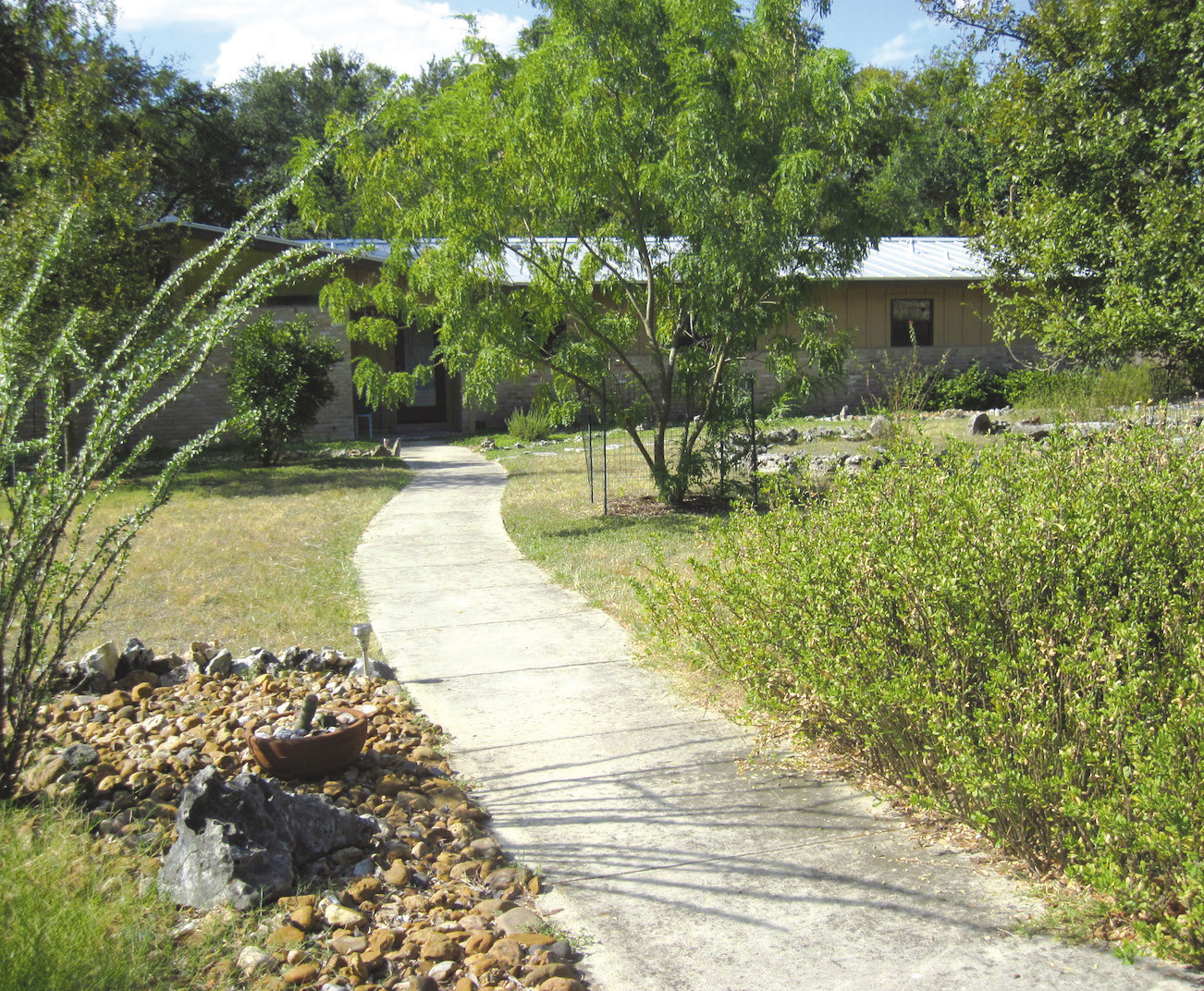
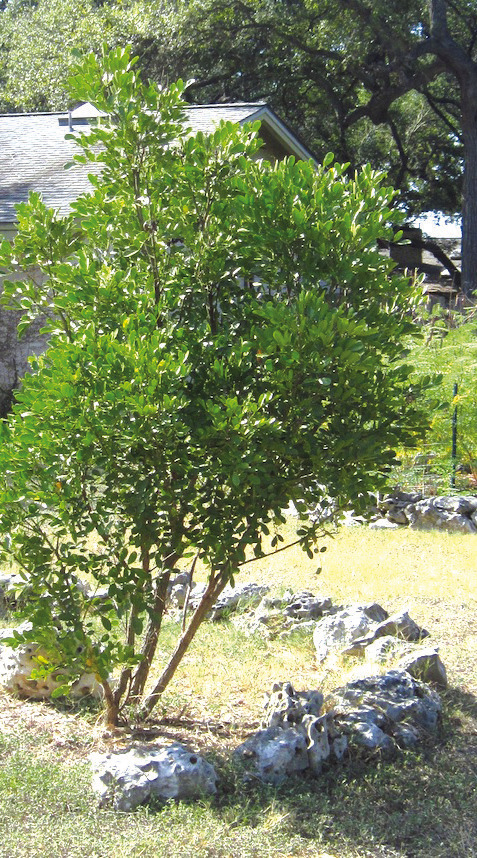
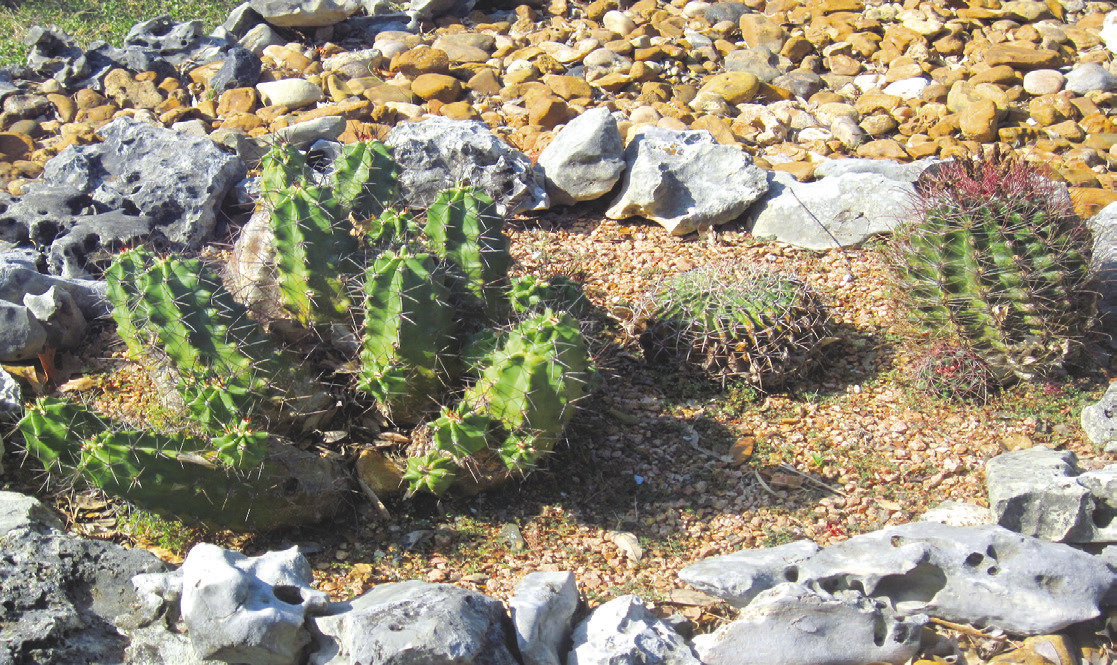
One extraordinary feature of the Schwartz’s yard is planting beds edged with holey limestone, a rock formed by mildly acid rainwater dissolving bedrock and a highly-desirable garden material. Ben collected these decorative rocks while helping a local family clear their farmland. A stone bench centered in the mid yard circle was also sourced from the farm property and holds a realistic example of Texas yard art: a metal horned toad. The bench and nearby shrubs may be surrounded with native wildflowers in future months, if deer cooperate.
The first area of the lawn transformed from turf grass to native plants was the strip along the front curb, now an impressive collection of native Texas cacti growing in river-stone ground cover. A multi-stemmed ocotillo cactus flanks the mailbox, with a clump of leatherstem on the opposite side of the front walk; both plants were sourced from west Texas. Hardy leatherstem grows from underground runners and loses leaves in winter but produces flowers along the stems each spring. Further along the curbside bed are twist leaf yucca, several native cacti specimens (claret cup, horse crippler, and fish hook) and another tall ocotillo at the end of the row. Lining the driveway are sages, lantana (if deer permit), another volunteer mountain laurel, an old boxwood from the home’s original landscape and one of the replacement elms.
As the front yard adjusts to changes in sun and shade exposure, the Schwartz landscape may lose both old and new plants to climate conditions or neighborhood deer, but then survivors are even more valued. Grass (now a mix of Bermuda or natives) is mowed as a ground cover rather than turf, while native horse herb shows green leaves and tiny blooms in partial shade near the house. Like all landscapes in central Texas, the Schwartz yard continues to evolve in response to basic challenges: deer, drought, freeze and heat.
